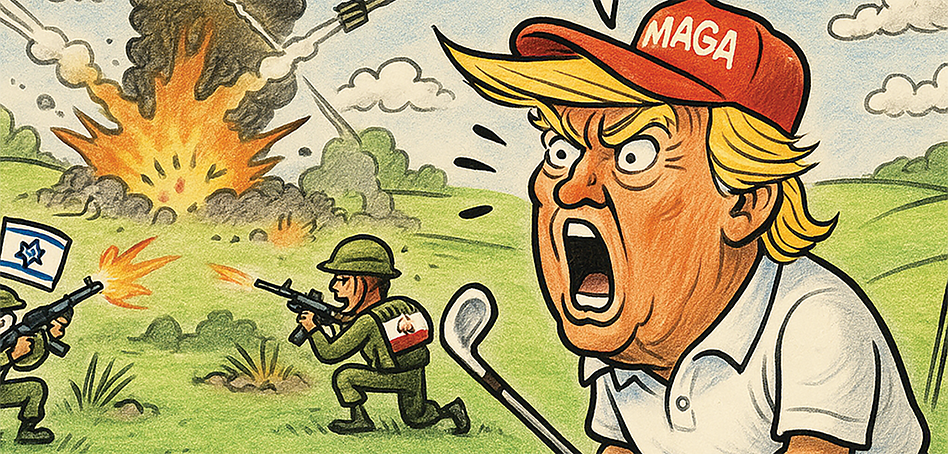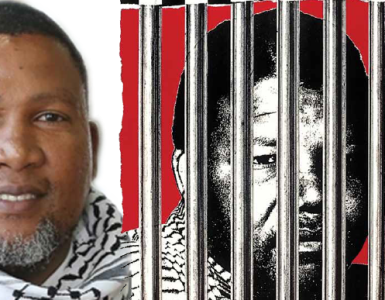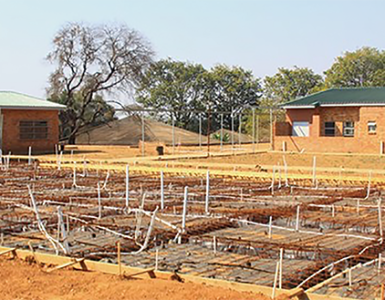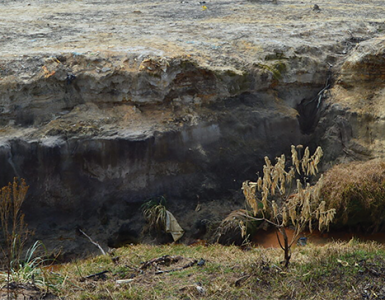CEASE-UP: A psychologist explains why the president makes fast and furious statements…
By Own Correspondent
WASHINGTON – February 22, 2025: Donald Trump’s latest forthright outburst was made as part of his attempts to create a peace deal with Iran and Israel. “I’m not happy with Israel,” he told reporters on June 24.
“We basically have two countries that have been fighting so long and so hard that they don’t know what the fuck they’re doing.”
This came a day after Trump had announced a ceasefire between Israel and Iran. By the next day, the ceasefire had been violated by both Iran and Israel. Trump was clearly furious, and his language showed it.
This was not a verbal slip – there was no immediate correction, no apology, no nonverbal indication of embarrassment. He just stormed off, clearly angry. This is not the kind of language that is normally associated with a president. Some have been reported to use the f-word before, but usually behind closed doors.
We expect presidents to be calm, measured, thoughtful, considered. Trump’s comment was none of these things. Theodore Roosevelt, the 26th US president, once recommended a foreign policy strategy that was based on: “Speak softly and carry a big stick.”
He was suggesting quiet menace, but Trump showed frustration, barely contained. His furious, aggressive response was like something straight out of an old psychology textbook.
In the 1930s, psychologists developed the frustration-aggression hypothesis to explain how aggressive behaviour can arise. The hypothesis suggested that when a person’s goal is blocked in some way, it leads to frustration, which then results in aggression.
Aggression was considered a “natural” way of releasing this unpleasant state of frustration. They were clearly different times.
Over the next few decades, this hypothesis was thought by most psychologists to be a gross oversimplification of complex human behaviour. It assumed a direct causal relationship between frustration and aggression, ignoring all the other situational and cognitive factors that can intervene.
Human beings are more complex than that, psychologists argued — they find other ways of dealing with their frustrations. They use their rational system of thought to find solutions. They don’t have to lash out when they’re frustrated in this seemingly primitive way.
Perhaps, that’s why many people feel shocked when they watch this United States president in certain situations. To many of us, it all seems so basic, so unsophisticated, so frightening.
Fast vs Slow Thinking
The Nobel laureate and psychologist Daniel Kahneman, in his book Thinking Fast and Slow (2011), characterized the two systems that underpin everyday decision-making. His work may help with understanding of what’s going on here.
He describes system one as the evolutionary, basic system. It operates unconsciously, automatically and very quickly, handling everyday tasks like reading other people’s emotions, without any effort. It is an intuitive system designed to work in a world full of approach and avoidance, scary animals and friendly animals. It is heavily reliant on affect to guide decision-making.
In contrast, system two is slower, more deliberative. It requires conscious effort and is used for complex thinking, solving difficult problems, or making careful decisions.
The relationship between the two systems is critical, and that may get us thinking about Trump in more detail.
Kahneman says that system one is a bit of a “workaholic,” beavering away all the time, making “suggestions” for system two to endorse. Good decisions – depend upon system two checking the suggestions of system one.
But system one often jumps quickly and unconsciously to certain conclusions. System two should check them, but often doesn’t, even when it would be easy.
Here is a well-known example. Answer the following question: “A bat and ball cost one pound ten pence, the bat costs one pound more than the ball. How much does the ball cost?”
One answer looks blatantly obvious – but it isn’t correct. The correct answer (after a bit of thought) is five pence. About 80% of university students give the very quick and incorrect answer of ten pence because it “looks” right. Their system two never checked.
In many people, it seems system two is not used nearly enough. There are striking individual differences in the way that people rely on emotion and gut instinct versus the rational system in making decisions.
Emotional Decisions?
It appears that Trump makes decisions very quickly (classic system one), often without extensive deliberation or consultation with advisers. Both in his presidency and in his business career, he seemed to prioritize immediate action over any sort of prolonged and thoughtful analysis. That’s why he changes his mind so often.
His decisions seem to be driven by strong emotions. His response to events, opponents and issues are often passionate and visceral. This could lead to decisions being unduly influenced by personal feelings, first impressions based on arbitrary cues, and interpersonal perceptions, rather than anything more substantial.
Trump’s style of decision-making emphasises immediacy and emotional conviction, which can be effective in rallying supporters and creating a sense of decisiveness.
However, it also can lead to unpredictable outcomes and, as has been seen again and again, somewhat controversial, impulsive actions.
Many suggest that Trump’s decision-making style reflects his background in the high-pressure and high-stakes world of business, where quick judgements and gut instinct can be advantageous in these sorts of competitive winner-takes-all environments
But the world at war is a more precarious place, where system one needs to be kept more firmly in check. Gut instincts may have a role to play, but that old lazy system two needs to be more vigilant. Especially, it would seem, in Trump’s case. – Study Finds
‘Israel operates in Iran on a grand scale’
PROGRAMME: If Tehran had the bomb, it seems very unlikely that Netanyahu would have entered Iran in such a manner, with such a vast and spectacular attack, argues the writer of this article…
By Eugenio Garcia Gascon
In 2017, during his first term, Donald Trump canceled the agreement that the Obama administration, against Benjamin Netanyahu’s wishes, had reached a few months earlier with Tehran regarding its nuclear program. During those months, the prime minister made it clear that he would prevent Iran from accessing nuclear warheads by any means necessary.
Moreover, Netanyahu claimed that Iran was only a few months, or even a few weeks, away from acquiring the bomb, which has proven completely false. Eight years have passed since then, and the Islamic Republic still has the bomb.
Moreover, its top leaders have always maintained that building one is not part of their plans, and they have kept their word.
But was Iran’s policy of containment a mistake? Yes, it probably was, since if Tehran had the bomb, it seems very unlikely that Netanyahu would have entered Iran in such a manner, with such a vast and spectacular attack. He would have thought twice before bombing Iran with the brazenness he did this June. Iran’s nuclear weapons would certainly have deterred Israel.
Tehran is a victim, and its refusal to possess nuclear weapons reflects the suffering that has characterised Shiites since the origins of Islam. Now it may be too late to correct course, as the Iranians had plenty of time—no less than eight years—to build the bomb, but they failed to do so, and now they simply have to resist the onslaught of Israel, and perhaps the United States.
One wonders how far Netanyahu will take this adventure. In his speech in English after the attack, he claims to be a friend of the Iranian people and an enemy of the Islamic regime, a slogan he has often chanted. But it’s clear he’s seeking regime change, and we don’t know if the June attacks are just the beginning of a more complex process to remove the ayatollahs from power.
Netanyahu’s situation is equally delicate, which is why he maintains pressure on the Gaza Strip. This pressure cannot be said to be applied as much to Hamas as to the 2,4 million Gazan civilians he keeps in suspense, driving them from one place to another through bombs and murder after having devastated the territory, as if he were waiting for Trump’s green light to expel them forever.
The fact that he won’t even allow a state commission to investigate the errors that led to October 7, 2023, speaks volumes about his strategy. The head of the army, the director of the Shin Bet secret services, and the defence minister have all resigned. Of all those responsible for the fiasco of 20 months ago, he is the only one still standing, and he shows no sign of wanting to step aside.
Netanyahu has chosen to rush forward, evading his responsibility, which is the responsibility of Israel’s top leader. At every opportunity, he maintains that he made no mistake and that the guilty parties were the army chief, the defence minister, and the Shin Bet director, and no one can move him from that position.
The attack on Iran is a further step forward in its race to evade investigation. In that race, it has achieved two major successes in recent months: the relative normalisation of Lebanon at the expense of Hezbollah, and the fall of the Syrian regime. It is still too early to know whether it now intends to put an end to the Islamic regime for good.
Such an objective presents countless challenges. Above all is the fact that Iran is a vast, deeply divided country. A coup d’état seems impossible, even though Iran is infiltrated by the Israeli secret services to an extent unknown to us. Israeli activities are numerous and occur even at the highest levels of the regime, as the recent attacks have demonstrated.
Iran’s deep social and religious divide suggests that if a coup led by Israel and the United States takes place, the country’s stability will be at risk. The Islamic regime, despite all its limitations, enjoys considerable support that could plunge the country into a bloody civil war. – Globalter
* Eugenio Garcia Gascon has been a correspondent in Jerusalem for 29 years. He is a Cirilo Rodríguez journalism award winner


































